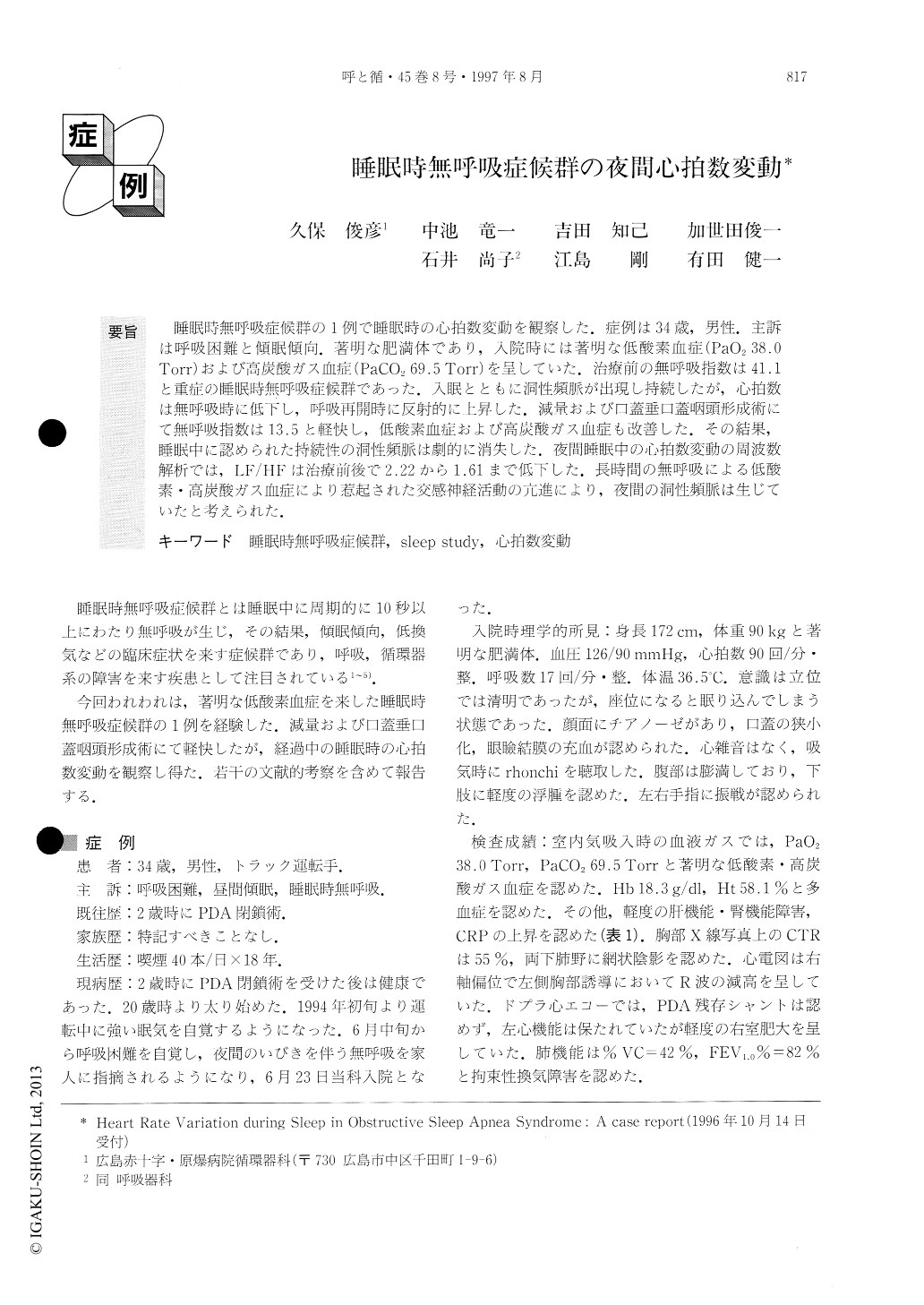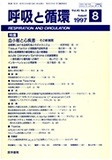Japanese
English
- 有料閲覧
- Abstract 文献概要
- 1ページ目 Look Inside
睡眠時無呼吸症候群の1例で睡眠時の心拍数変動を観察した.症例は34歳,男性.主訴は呼吸困難と傾眠傾向.著明な肥満体であり,入院時には著明な低酸素血症(PaO2 38.0Torr)および高炭酸ガス血症(PaCO2 69.5 Torr)を呈していた.治療前の無呼吸指数は41.1と重症の睡眠時無呼吸症候群であった.入眠とともに洞性頻脈が出現し持続したが,心拍数は無呼吸時に低下し,呼吸再開時に反射的に上昇した.減量および口蓋垂口蓋咽頭形成術にて無呼吸指数は13.5と軽快し,低酸素血症および高炭酸ガス血症も改善した.その結果,睡眠中に認められた持続性の洞性頻脈は劇的に消失した.夜間睡眠中の心拍数変動の周波数解析では,LF/HFは治療前後で2.22から1.61まで低下した.長時間の無呼吸による低酸素・高炭酸ガス血症により惹起された交感神経活動の亢進により,夜間の洞性頻脈は生じていたと考えられた.
We analyzed the heart rate variation (HRV) during sleep in a case of sleep apnea syndrome. A 34-year-old man was admitted because of dyspnea and somnolence. He was markedly obese. During sleep he showed sinus tachycardia and cyclic variation of heart rate associat-ed with apnea. With weight reduction and uvlopalato-pharyngoplasty, his symptoms and arterial blood gas were improved,: apnea index 41.1 → 13.5, PaO2 38.0 → 76.3 Torr, and PaCO2 69.5 → 42.0 Torr. Sinus ta-chycardia observed during sleep diminished dramati-cally. HRV was evaluated using spectral variables of low frequency (LF) and high frequency (HR) components, and the LF/HF ratio was determined from Holter recordings. After treatment, the HF component was increased from 30 to 415 msec2 and the LF/HF ratio was decreased from 2.22 to 1.61. Thus, accelerated sympa-thetic activation, triggered by hypoxia and hypercapnia, may result in an unusual sinus tachycardia during sleep.

Copyright © 1997, Igaku-Shoin Ltd. All rights reserved.


